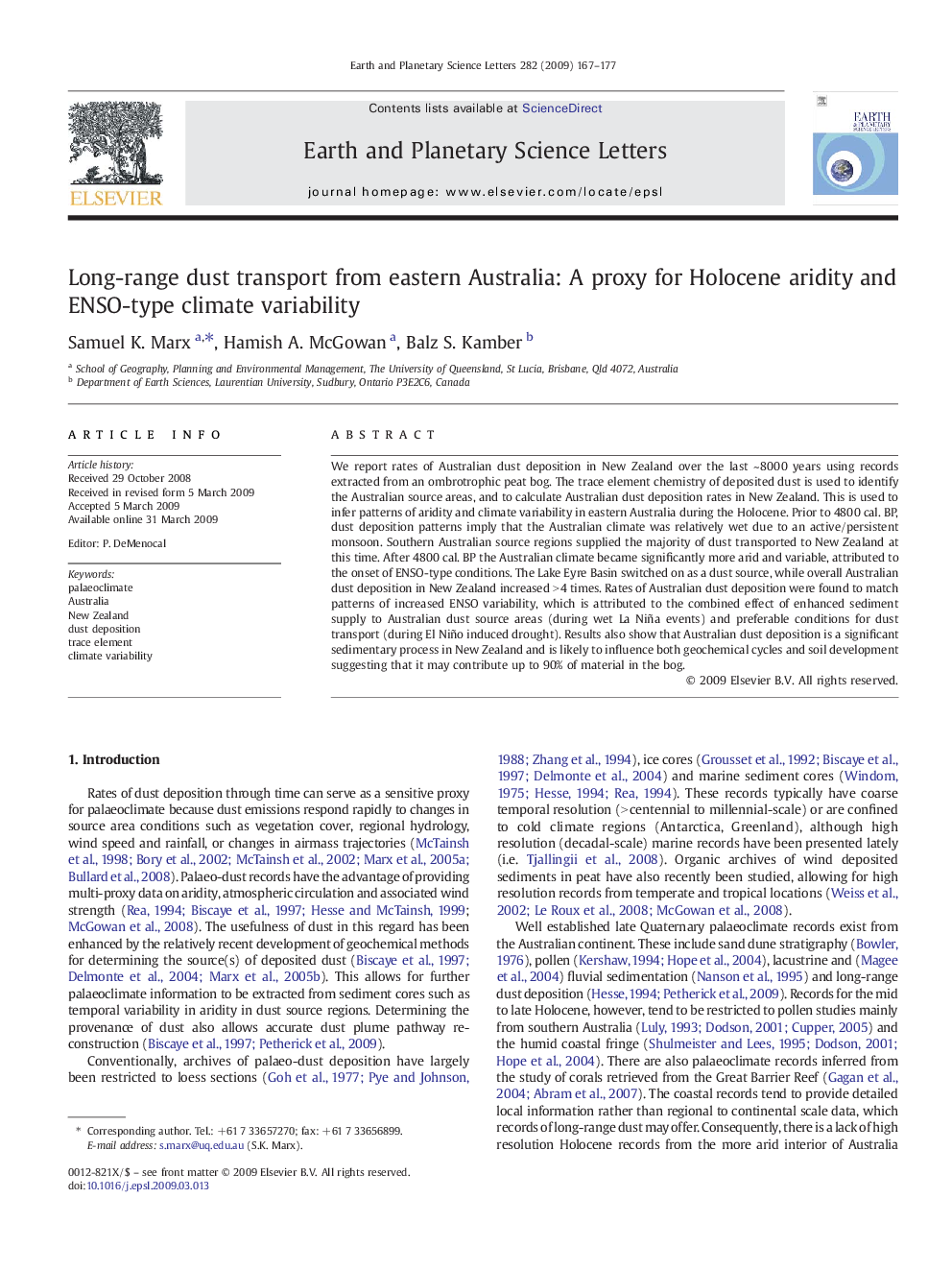| Article ID | Journal | Published Year | Pages | File Type |
|---|---|---|---|---|
| 4679092 | Earth and Planetary Science Letters | 2009 | 11 Pages |
We report rates of Australian dust deposition in New Zealand over the last ~ 8000 years using records extracted from an ombrotrophic peat bog. The trace element chemistry of deposited dust is used to identify the Australian source areas, and to calculate Australian dust deposition rates in New Zealand. This is used to infer patterns of aridity and climate variability in eastern Australia during the Holocene. Prior to 4800 cal. BP, dust deposition patterns imply that the Australian climate was relatively wet due to an active/persistent monsoon. Southern Australian source regions supplied the majority of dust transported to New Zealand at this time. After 4800 cal. BP the Australian climate became significantly more arid and variable, attributed to the onset of ENSO-type conditions. The Lake Eyre Basin switched on as a dust source, while overall Australian dust deposition in New Zealand increased > 4 times. Rates of Australian dust deposition were found to match patterns of increased ENSO variability, which is attributed to the combined effect of enhanced sediment supply to Australian dust source areas (during wet La Niña events) and preferable conditions for dust transport (during El Niño induced drought). Results also show that Australian dust deposition is a significant sedimentary process in New Zealand and is likely to influence both geochemical cycles and soil development suggesting that it may contribute up to 90% of material in the bog.
